Create a joint
Learn how to use the Joint command to create a joint between components that are not yet positioned in relation to each another in Fusion.
Click Design > Solid > Assemble > Joint
 .
.The Joint dialog displays.
On the Position tab, select a Mode for Component 1.
- Simple
 : Select a Snap point to place the joint origin.
: Select a Snap point to place the joint origin. - Between Two Faces
 : Select Plane 1 and Plane 2 to center the joint origin between them, then select a Snap point.
: Select Plane 1 and Plane 2 to center the joint origin between them, then select a Snap point. - Two Edge Intersection
 : Select Edge 1 and a non-parallel Edge 2 to locate the joint origin at the extended intersection.
: Select Edge 1 and a non-parallel Edge 2 to locate the joint origin at the extended intersection.
- Simple
Repeat Step 2 and Step 3 for Component 2.
Note: Component 1 typically moves to Component 2, so Component 1 cannot be grounded.Adjust the Joint Alignment settings:
- Angle: Drag the rotation manipulator handle or enter an exact angle of revolution.
- Offset X: Drag the move manipulator handle or enter an exact distance.
- Offset Y
- Offset Z
- Flip
 : Click to flip Component 1 over the Joint Origin.
: Click to flip Component 1 over the Joint Origin.
On the Motion tab, select the joint Type, then adjust its associated settings:
- Rigid
 : Lock components together.
: Lock components together. - Revolute
 : Rotates a component around the joint origin.
: Rotates a component around the joint origin.- Rotate: Choose the axis to rotate around.
- Slider
 : Slides a component along a single axis.
: Slides a component along a single axis.- Slide: Choose the axis to move along.
- Cylindrical
 : Rotates and slides a component on a single axis.
: Rotates and slides a component on a single axis.- Axis: Choose the axis to rotate around and move along.
- Pin-Slot
 : Rotates and slides a component on two different axes.
: Rotates and slides a component on two different axes.- Rotate: Choose the axis to rotate around.
- Slide: Choose the axis to move along.
- Planar
 : Rotates a component around one axis normal to a plane and slides it along two axes parallel to the plane.
: Rotates a component around one axis normal to a plane and slides it along two axes parallel to the plane.- Normal: Choose the axis normal to the plane.
- Slide: Choose the axis to move along.
- Ball
 : Rotates a component around all three axes on a gimbal system (three nested rotations).
: Rotates a component around all three axes on a gimbal system (three nested rotations).- Pitch: Choose the lateral axis.
- Yaw: Choose the perpendicular axis.
- Rigid
On the Motion tab, in the Joint Motion Limits section, define and limit the range of motion for the joint:
- Motion: Select the motion type that you would like to set limits for. This is available when you have selected a joint that has more than one degree of motion.
- Minimum: Specify the minimum limit on the range of motion.
- Maximum: Specify the maximum limit on the range of motion.
- Rest: Specify the resting position for components within the range of motion.
Click the start icon next to Preview Motion to preview the joint motion without the influence of other component relationships. Click the stop icon to stop the preview.
- Check All Limits to preview the motion with all degrees of motion and limits applied.
Click OK.
The joint displays in the canvas.
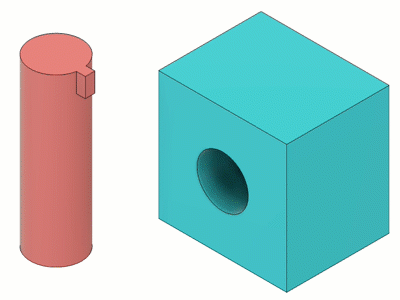 Rigid |
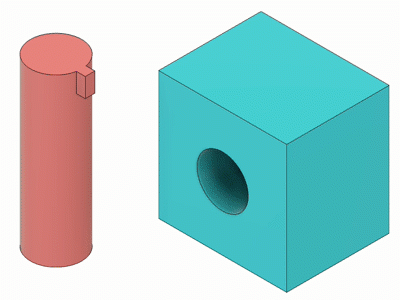 Revolute |
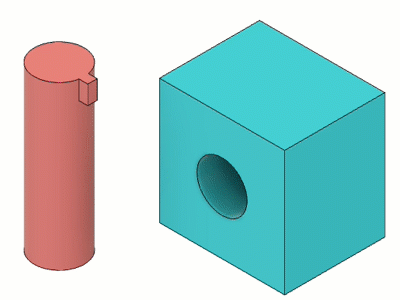 Cylindrical |
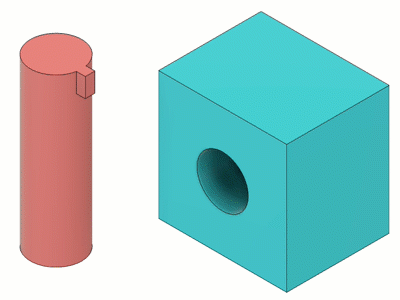 Slider |
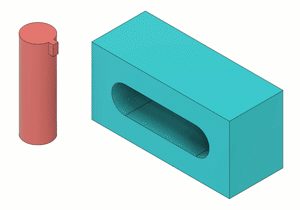 Pin-Slot |
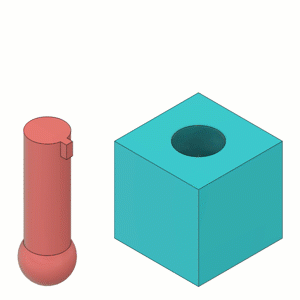 Ball |
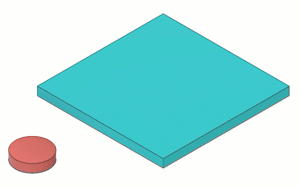 Planar |
Tips
Use Pin
 to pin one component to keep the assembly in place when you create a joint.
to pin one component to keep the assembly in place when you create a joint.To snap to points on a face, place the pointer over a face, then hold
Ctrl(Windows) orCommand(MacOS).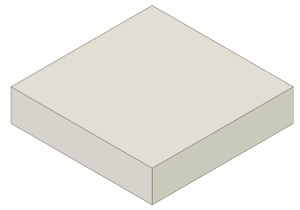
To select points along the axis of a hole that are obscured by other features, hold
Ctrl(Windows) orCommand(MacOS), then click a snap point.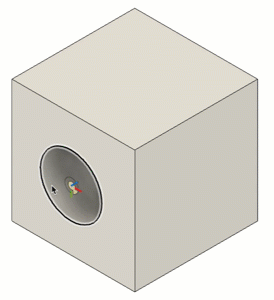
When you create a joint, if the first component you select is ground to parent, it is automatically ungrounded from parent. The second component you select maintains its ground to parent status.